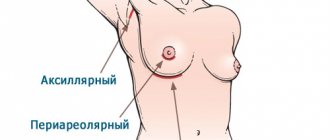Many people are afraid of anesthesia. And many are hesitant to undergo knee arthroscopy, being sure that it is performed under anesthesia. But if you understand the medical terminology, it turns out that this is not so. Intrigued? Well, then let's figure it out.
Looking in any dictionary of medical terms, you will read that anesthesia is a deliberate inhibition of the central nervous system (CNS), the purpose of which is to “disconnect” the patient from the feeling and awareness of pain impulses. That is, for example, the effect on the patient’s brain with special drugs. In this case, an artificial coma occurs, muscles relax, some reflexes turn off and pain sensitivity disappears.
Anesthesia involves completely putting a person to sleep in order to turn off the central nervous system. However, not every patient is put to sleep during arthroscopy. Anesthesia is used only in special cases. And most arthroscopic interventions are performed under local, spinal and conduction anesthesia. These types of pain relief do not require “switching off consciousness”, so they frighten patients less.
Why is anesthesia needed for knee arthroscopy?
Anesthesia is a general concept that refers to the process of suppressing pain sensitivity with the help of drugs. It is necessary to relieve a person from pain, stress and discomfort during surgery.
Anesthesiologists distinguish several types of anesthesia:
- General (anesthesia) - effects on the central nervous system, the brain and consciousness of a person. Anesthetics are administered intravenously or by inhalation, through a laryngeal tube or mask.
- Spinal and epidural - blockade of the nerve roots that innervate the lower extremities. Painkillers are injected into the spine, at the level of the spinal cord.
- Conductor (regional) - involves blocking the nerve trunks and nerve plexuses, which are located above the operation site. Arthroscopy usually involves blocking the femoral and sciatic nerves.
- Local (infiltration) - blockade of sensory receptors of peripheral nerves. It involves the infiltration of periarticular tissues with anesthetics, as well as their introduction into the joint cavity.
Different types of anesthesia differ in strength, degree of analgesic and muscle relaxant effect. When choosing an anesthesia method, a number of factors are taken into account: the patient’s age, his state of health, the presence of concomitant diseases, the degree of trauma and pain of arthroscopic intervention, etc.
Complications of anesthesia
Therapy is carried out taking into account the reasons that caused the pathological condition. In case of respiratory disorders, the composition and volume of the gas-air mixture is adjusted, and the endotracheal tube is sanitized using an electric suction. If it is not possible to completely clear the airways, call the endoscopic team on duty to perform emergency bronchoscopy. To relieve laryngospasm, narcotic analgesics, atropine, antispasmodics, and adrenergic agonists are used. To saturate the blood with O2, the device is set to enhanced oxygenation mode (100%). Maintaining a sleepy state is ensured by intravenous anesthetics.
Cardiac dysfunction is treated symptomatically. For bradycardia, administration of atropine and adrenaline is required. A decrease in blood pressure against the background of weakened cardiac activity is an indication for transferring the patient to the administration of pressor amines through a syringe pump. The dose of anesthetic may need to be reduced. Arrhythmias are stopped using cordarone, amiodarone, procainamide, lidocaine. Fibrillation that is not amenable to chemical treatment requires electrical defibrillation. When blood pressure increases, antihypertensive drugs are administered; when blood pressure decreases, hypotonic drugs, infusion solutions to replenish blood volume, and steroid hormones are administered.
Short-term postoperative psychosis cannot be relieved with medications. In case of severe psychomotor agitation, the prescription of neuroleptics and narcotic analgesics is allowed. Long-term disorders of the central nervous system require therapy with the use of nootropics, antioxidants, and general strengthening agents (multivitamin complexes, adaptogens). Intestinal tone usually recovers on its own within 1-2 days. In case of prolonged paresis, proserin is administered.
Malignant hyperthermia is an indication for the administration of datrolene, a muscle relaxant that can block ryanodine receptors. In addition, symptomatic treatment drugs and physical methods of reducing the temperature are prescribed (ice on large vessels, wetting the sheets and the patient’s body with cold water, ventilating the patient’s body). For allergic reactions, antihistamines, glucocorticosteroids, and symptomatic medications are infused. Severe manifestations require mandatory tracheal intubation and transfer to mechanical ventilation, if this has not been done previously.
General rules of anesthesiology
Adequate pain relief is an important condition for restoring limb function after surgery. Therefore, certain requirements are imposed on anesthesia during arthroscopic operations.
The main ones:
- sufficient intraoperative pain relief;
- adequate pain relief in the early postoperative period;
- minimal impact on the muscle tone of the operated limb.
It is extremely important that the patient maintains muscle strength and muscle tone in the lower extremity after surgery. This is necessary for early loading of the leg (full or dosed). If muscle strength is maintained, the person begins to walk soon after surgery, which allows him to be discharged from the hospital faster.
Trembling, chills, muscle aches
Anesthetic drugs affect a temporary disruption in the body's thermoregulation. Therefore, when “coming off” from anesthesia, patients often experience sensations similar to chills, as with a common cold. This condition usually goes away within half an hour after waking up from anesthesia. If the patient becomes cold, he should be covered with a warm blanket. Chills and trembling are not dangerous postoperative complications.
Muscle pain is not a complication due to anesthesia. This is due to the fact that operations are carried out over several hours and the patient being operated on is in one position all the time. Therefore, muscle aches can occur throughout the body.
Features of different types of anesthesia
For intraoperative pain relief, various methods of general, regional and local anesthesia, as well as their combinations, are used. Each of them has a number of disadvantages and advantages.
Local
From a technical point of view, local anesthesia is the simplest. Even a traumatologist can perform local administration of anesthetics without the help of an anesthesiologist. However, such anesthesia does not always provide a sufficiently strong analgesic effect. And its quality largely depends on the practical skills of the traumatologist.
Conductor
It is one of the best options for pain relief during arthroscopic interventions on the knee joint. It is technically more complex than local, and therefore requires great skill of the anesthesiologist. The doctor must have a good knowledge of the structure of the peripheral nervous system, master the technique of blocking nerves at different levels, and be able to use special instruments to perform a femoral / sciatic nerve block.
Conduction anesthesia provides long-term pain relief during movement of the lower limb and thereby improves the course of the early postoperative period. However, due to technical difficulties, it is still less common than spinal.
Spinal
Guarantees adequate postoperative pain relief and early restoration of muscle tone. However, a number of complications can occur, including spinal cord or root injuries, radiculopathy, cauda equina syndrome, seizures, etc. The high incidence of side effects (back pain, headaches, hypotension) often reduces patient satisfaction with the quality of such pain relief.
Anesthesia
It is rarely used during arthroscopy, usually in one-day hospitals. Modern intravenous and/or inhalational anesthetics can be used for anesthesia. During surgery, the patient often breathes independently through a laryngeal mask. For special indications, he may undergo artificial pulmonary ventilation (ALV).
Anesthesia has its advantages:
- safety;
- good handling;
- minimal number of side effects;
- no effect on the muscle tone of the limb in the postoperative period;
- possibility of rapid discharge from hospital.
At the same time, anesthesia does not always provide adequate postoperative pain relief. Therefore, in the early stages after arthroscopy, the patient may be additionally administered anesthetics.
Local anesthesia
Treatment under anesthesia is the only option for providing surgical care to a patient or performing complex manipulations. Often, a doctor will numb a specific area, which is achieved by injecting it with an anesthetic solution and is called local anesthesia. This type of anesthesia is used for opening ulcers, treating teeth, and excising a hernia. Local anesthesia is the injection of an anesthetic into the skin and other anatomical structures of the place where surgery is expected to be performed.
The anesthetic injections are superficial; only in exceptional cases can the doctor administer the drug more deeply. Local anesthesia is performed by injecting the drug through a very thin needle, so the actual anesthesia procedure is minimally painful. Often, the administration of an anesthetic is combined with sedation - sedatives are introduced into the patient’s body, which normalize the person’s psychological state, reducing feelings of anxiety and restlessness.
Despite the fact that local anesthesia is used very widely in medicine, the consequences of anesthesia can be quite serious. For example, local anesthetics can have a negative effect on the heart and brain, leading to heart rhythm disturbances, seizures and loss of consciousness. At the same time, doctors claim that local anesthesia, compared to general anesthesia, is safer for the patient’s health.
Choosing a pain relief method
Today, most arthroscopic interventions are performed under spinal anesthesia. For short-term operations, a 2% lidocaine solution is injected into the patient's subarachnoid space. For arthroscopy lasting more than 1.5 hours, a 0.5% solution of isobaric or hyperbaric spinal marcaine is used. Note that spinal anesthesia can cause hemodynamic complications if the patient is hypovolemic. Therefore, in gerontological patients, an epidural is often used instead.
In recent years, diagnostic and therapeutic arthroscopy has increasingly been performed under general anesthesia. It is less expensive, less likely to cause side effects, and produces greater satisfaction among patients and trauma surgeons.
In emotionally labile patients, intravenous anesthesia with mechanical ventilation or spontaneous breathing through a laryngeal mask is often used.
Local anesthesia is used only for low-pain arthroscopic interventions, for example, when removing foreign bodies from the joint cavity. “Classical” anesthesia with intubation and muscle relaxation is also used extremely rarely, only if there are special indications.
Why patients are afraid of anesthesia
Many patients are not so much afraid of the intervention itself as they are worried that they will be put under general anesthesia. This is due to numerous myths and rumors surrounding anesthesia.
Indeed, the history of medicine describes cases when a narcotic substance did not have the desired effect, and additional administration of the drug led to the death of the patient.
The second thing that makes general anesthesia dangerous, according to patients, is a state when a person is immobilized, but is aware of everything and feels pain. Such fears are justified, and in practice this happens in approximately 0.2% of cases.
Contraindications
The greatest number of contraindications exist for general anesthesia. When administered systemically, anesthetic drugs can negatively affect internal organs. Therefore, anesthesia is contraindicated for arrhythmias, heart defects, bronchial asthma, bleeding disorders, renal, hepatic and cardiovascular failure.
Contraindications to spinal and epidural anesthesia may include infection at the injection site and allergy to anesthetics. These types of pain relief will not be used even if there are no contraindications. This is possible if the patient himself refuses them.
Which of the many?
For each age and for each operation, anesthesia is selected individually. The choice depends on the physical condition of the patient, on concomitant problems with his health and, of course, on the qualifications, experience and skill of the anesthesiologist. After all, even for the same operation, different patients may use different anesthesia.
Many types of anesthesia , such as oral (through the mouth) and rectal (through the anus using an enema), are practically not used today. Intramuscular anesthesia is also gradually becoming a thing of the past, since its effect is almost impossible to control, and the drugs used in this method of pain relief are not entirely harmless.











